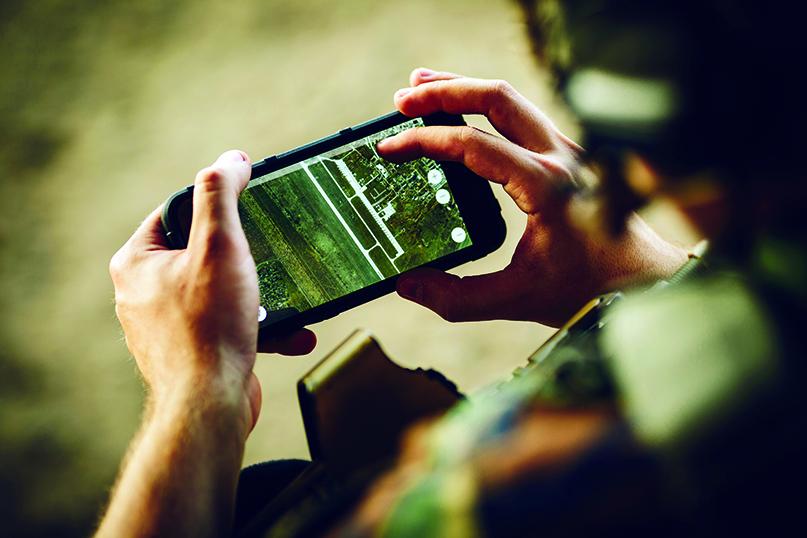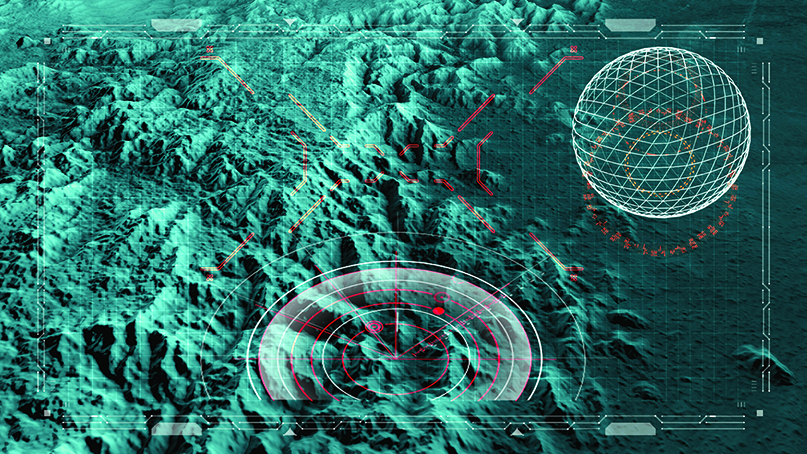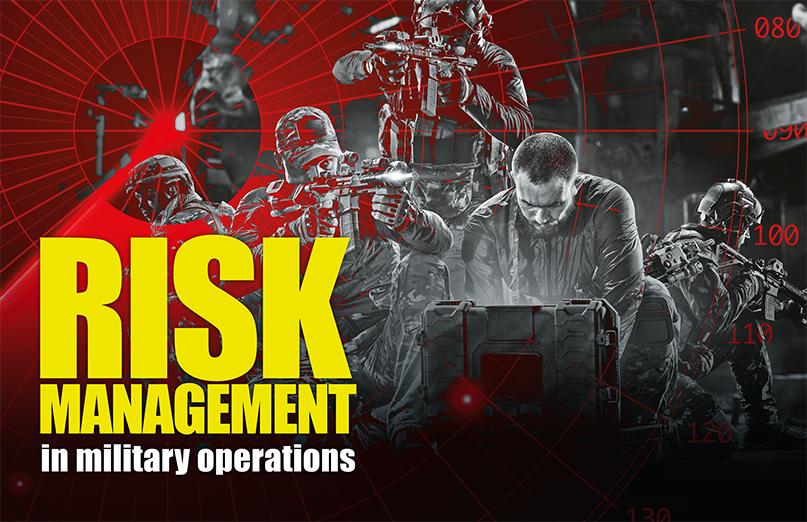Military operations are inherently complex, dynamic, dangerous, and, of course, involve an acceptance of risk. Because risks are often associated with profit, commanders weigh risks against the benefits that can be obtained from an operation, as conditions for the success of the mission are balanced with the risks inherent in the military operation, and usually all commanders practice risk management in military decision-making, but the risk management approach, the degree of success vary widely depending on the leader and the level of training and experience.
Since the Korean War, the U.S. Armed Forces have suffered more non-combat losses than combat losses from the enemy due to the rapid change in the operational environment, the speed and high frequency of operations, the overabundance of manpower, equipment failures, poor support, and the effects of the physical environment and human factors.
Battle losses
Throughout the history of armed conflicts and wars, military and political commanders take into account the impact of human losses on the execution of missions, strategies and policies. Military and political commanders consider battle losses from different points of view. Nevertheless, the two sides try to balance the effects of casualties, impact on civilians, damage to the environment, loss of equipment, the level of public reaction and the value of achieving the national goal.
Risk management is used by commanders and soldiers at all levels, and it applies to all missions and environments across a wide range of military operations. Recently, military commanders have become aware of the importance of clarifying principles, procedures, and responsibilities for the successful execution of the risk management process, in order to maintain combat power and resources. Sun Tzu says in his book “The Art of War” (Reducing the factors that hinder victory, shortening the distances to it, and assessing the risks is the correct course of action for military commanders). The main objective of risk management is to help units protect their combat power through accident prevention, enabling them to win the battle quickly and decisively with minimal losses.
Threat, danger, risk management from a military perspective
A threat is any current or potential situation that could cause injury, illness, or death to people, damage or loss of equipment or property, or lead to a mission regression. Whereas risk is the possibility of the threat or bad consequences of the threat and exposure to loss and injury. The level of danger is expressed in terms of the likelihood and severity of the threat. Threats and dangers are always present in the battlefields and training fields. Risk management is an integral part of tactical planning. Risk management must be carried out at all levels of the chain of command during each phase of military operations. This requires commanders, officers and soldiers to know how to use risk management to ensure that the mission is carried out with the highest efficiency and with the least losses.
Risk management is the process of identifying, evaluating and controlling risks and threats arising from operational factors and making decisions that balance the costs of risks with the benefits of the mission. Risk management does not affect or prevent the resilience and initiative of commanders, does not mean that it will eliminate risks completely, does not impose or justify the violation of international law, does not require a decision (to execute or not to execute), and does not eliminate the necessity of standard exercises, tactics, techniques, and procedures. Rather, it integrates risk management into the planning, preparation, execution of missions and risk-related decision making at the appropriate level in the chain of command and help to avoid any unnecessary risks.

commander of the Rangers paves the route on an electronic tablet
Risk management helps the leader by:
1- Preserving lives and resources and avoiding unnecessary risks.
2- Make informed decisions to carry out the task.
3- Determining the possible and effective control measures when there are no defined criteria.
4- Provide reasonable alternatives to carry out the task.
Types of risks of military operations
1- Tactical Risks: Tactical risks are risks related to the dangers that exist due to the presence of the enemy or opponent. They apply to all levels of warfare and across the scope of operations.
2- Accident risk: Accident risks include all operational risks except for tactical risks. They include the risks of friendly fire and also risks to civilians as a result of military operations, as well as the impact of operations on the environment. Activities associated with risks may include civilian personnel, equipment readiness, and environmental conditions.
Steps of risk management in military operations
1- Identification of threats: Commanders identify threats to the mission that may affect people, property, and the mission. Threat means any existing or potential situation that could involve injury, illness or death of personnel, damage or loss of equipment and property, or any reason that leads to mission deterioration. All aspects of the area’s past, present and future threats must be considered. All factors involved in a military operation, tactical and training operations include many types of threats. Mission factors, enemy, terrain, weather, forces and available support, time available, and civilian considerations are important factors in identifying threats, and for this purpose some other resources and tools that support threat identification can be used such as experts, regulations, manuals, standard operating procedures (SOPs), policies, and accidents’ data, war scenarios, data from risk assessment arrays, readiness assessments, cause and Effect diagrams, change analysis, logic diagrams, mapping techniques, training evaluations and post-action reviews.
2- Threat Assessment: Threat assessment is the process of determining the direct impact of each threat on a military operation. Threat assessment allows for enhanced situational awareness. This awareness builds confidence, morale and allows soldiers and units to take effective preventive measures in a timely manner.
The threat assessment process is as follows:
• Identify threats that can be prevented or avoided.
• Assess each threat that cannot be prevented or avoided to determine the likelihood of the risk occurring.
• Assess the severity of the risk of threats that cannot be prevented or avoided. Severity (defined as the result or cause of a serious accident) is expressed as the degree of injury or illness (including death), loss or damage to equipment or property, environmental damage, or other mission-impairing factors (such as loss of combat power).
• Determine the level of risk associated with the threats (extremely high, high, moderate, and low) taking into account both the probability and severity of the risk.
3- Developing controls and take risk-related decisions This step is accomplished by:
A- Develop controls. After assessing each potential threat, establish one or more controls that seek to mitigate the threat’s risk (likelihood, severity, or both). When establishing controls, the cause of the threat must be considered, not just the risk.
B- Make risk decisions. A key component of the risk decision process is the determination of whether the acceptance of risk is justified or unneccessary. The decision maker must compare and balance the risk against the expectations of the task or process. He alone decides whether the controls are sufficient and acceptable and whether the resulting residual risks can be accepted, and he may change, modify or reject and may direct the development of additional controls or alternative controls, as another option.

Satellite view of land, war operations, sci-fi, night vision with blue hues. Military target. Drone flying over an area. Military operation. Mountain reliefs and plains. Hud head-up display. 3d render
4- Execution of controls: Controls are the procedures and considerations a unit uses to prevent threats or reduce their risks. Execution of controls is the most important part of the risk management process. It stems from the chain of command’s contribution to the integrity of the unit. The controls executed include coordination and communication with adjacent and associated higher units and with individuals who carry out the task. The commander must ensure that specific controls are integrated into the process and that they are converted into simple orders that are understandable at all levels. If commanders conduct an in-depth assessment of the risks, the controls will be easier to execute, enforce, and follow. Commanders or individuals also develop one or more controls to remove or reduce the risk of an adverse event. In developing controls, the cause of the risk must be considered, not just isolating the risk. Controls can take many forms such as educational (awareness) controls. These controls are based on the knowledge and skills of units, organizations or individuals, and include awareness and control of danger. Effective learning controls are executed through individual and group training that ensures performance according to standards. Physical controls include positive measures to prevent exposure to risks by reducing or eliminating risks. They include engineering and management procedures. The concept behind engineering controls is that, to the extent possible, engineers or army units design equipment or a working environment that is intended to eliminate hazards or reduce exposure. If engineering measures cannot eliminate the risks, units apply administrative measures designed to reduce them.
Examples of risk management controls include:
• Application of safe work practices.
• Providing awareness briefing covering all aspects of the mission, including relevant risks and controls.
• Drinking plenty of water, eating well, and getting as much sleep as possible.
• Determining maximum speed limits, and using seat belts in military vehicles.
• Creating recognizable visual signs and tags to identify maneuver units.
• Enforcement of the use of ground guides in assembly areas and on dangerous terrain.
• Preparing noticeable and protected rest and sleep areas in assembly areas.
• Wear personal protective equipment.
5- Supervision and Evaluation: While carrying out the mission, commanders must ensure that risk management controls are properly understood and executed, and the unit’s effectiveness in managing risks is continually evaluated to gain insight into areas that need improvement. It must always be remembered that commandership and unity of discipline are the keys to ensuring the execution of effective risk management controls. All commanders are responsible for overseeing and carrying out mission exercises to ensure standards and controls are applied. Non-commissioned officers must also execute established safety policies as well as controls established for a specific operation or task. They include spot inspections, continuous inspection, preventive maintenance of equipment, confirmation briefing, and close supervision. The risk management process should also include, whenever possible, a post review to assess the performance of the unit in identifying risks and preventing dangerous situations. Hence, commanders should incorporate lessons learned from the operation into units’ standard operating procedures, mission plans, and future operations.
Military Operations Risk Assessment Array:
Risk assessment is the process of thinking to make operations safer without compromising the mission. Commanders must continuously assess the risks of the conditions under which they operate to prevent unnecessary loss of personnel or equipment and a deterioration in mission success. Risk assessment is how specific threats (conditions) can lead to harmful events and how these events can affect operations i.e., the likelihood of events and their expected effects, and the designation of risk levels.
The risk assessment array is based on two factors, the first factor is an estimate of the probability of an adverse event, in other words (the probability) assessed as frequent, probable, incidental, rare or unlikely. The second factor is an estimate of the expected severity of an event or incident, in other words, the severity (consequences), which are the expected results in terms of injury, property damage, or other factors that impede the task. It is evaluated as catastrophic, critical, moderate, or Negligible. Hazard level of estimated likelihood and severity. It is a type of score that assesses the (probability) of an error and the impact (severity) of the accident when it occurs and is expressed in levels very high risk, high risk, medium risk, low risk.
Conclusion:
Embedding risk management into the culture of militaries, and the military’s way of thinking, is critical to maintaining combat readiness and ensuring an efficient mission. This requires standardizing and institutionalizing the techniques, tools, and procedures that lead to decision-making and the correct acceptance of risks by military commanders at all levels.
« By: Dr. Retired Colonel Eng. Khaled Ananzah
(Environmental and occupational safety consultant and trainer)













